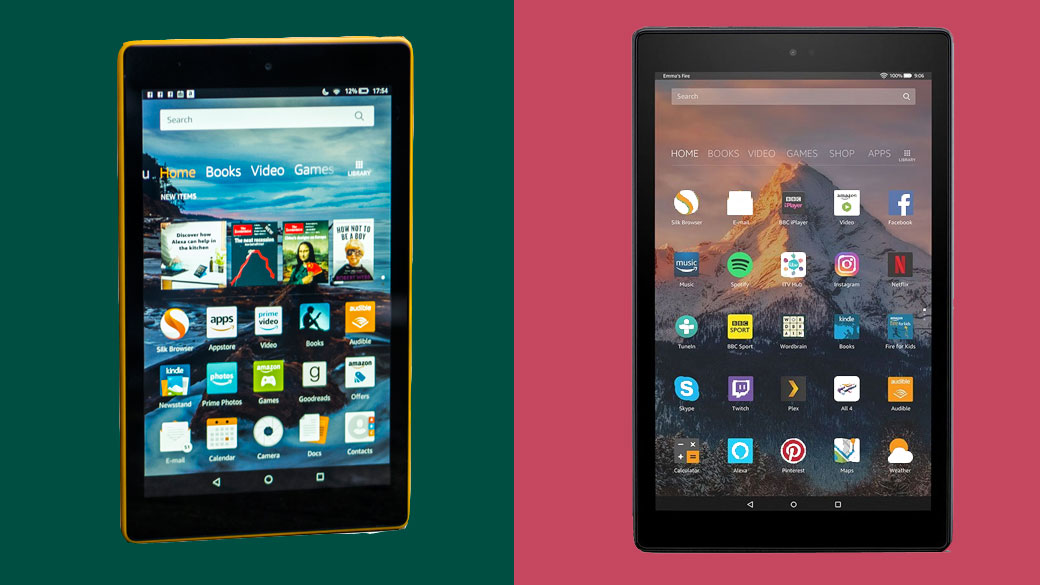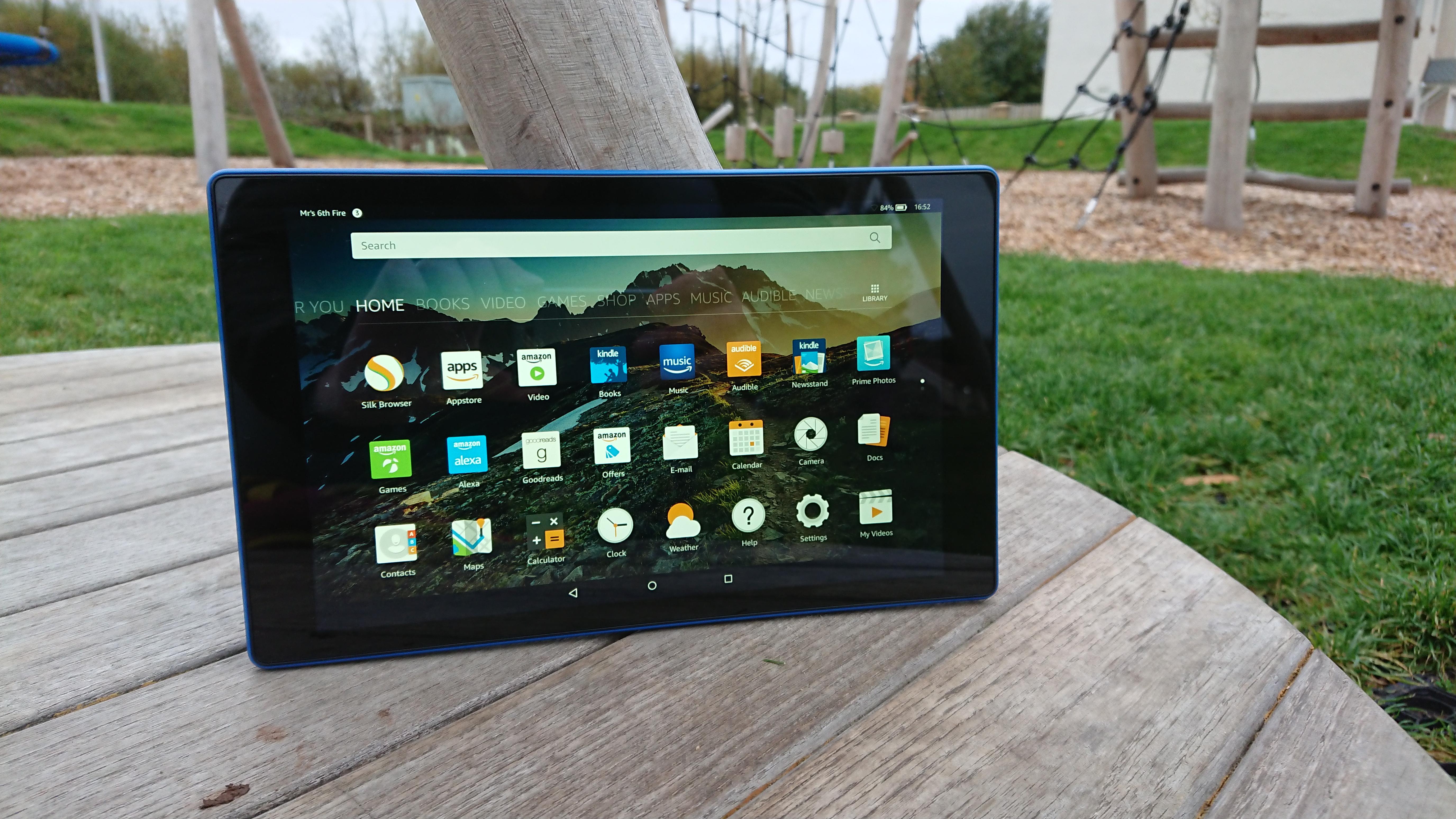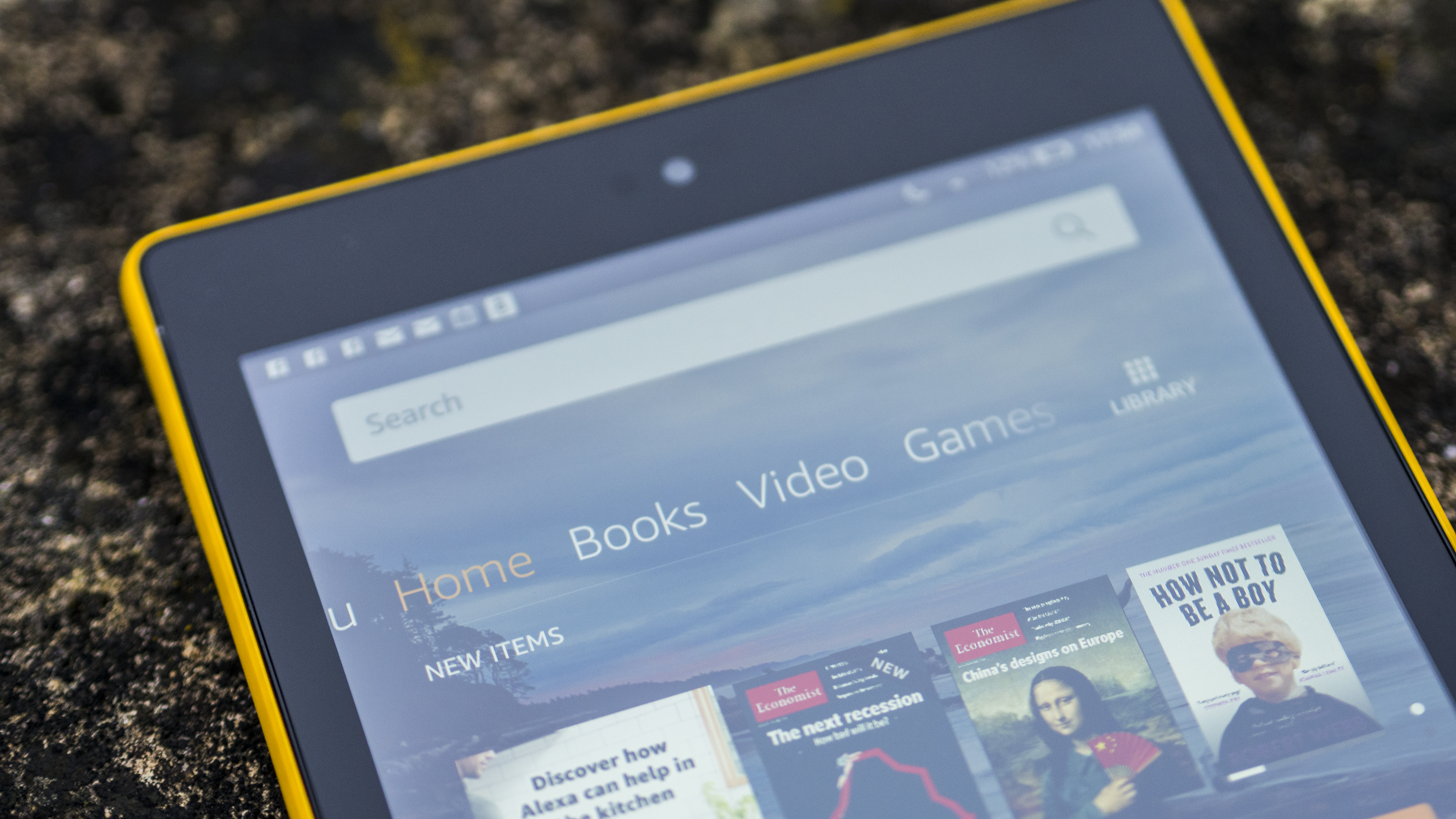Amazon Fire HD 8 vs Fire HD 10: which Amazon tablet is best for you
Amazon’s budget tablets

Amazon’s range of Fire HD tablets aren’t exactly processing powerhouses, nor are they portable cinemas or games consoles – but you wouldn’t expect them to be at their incredibly low price tag.
Costing less than all but the cheapest smartphones, the Amazon Fire HD tablets are definitely affordable, and still pretty decent devices despite this.
So if you’re on the market for a new tablet but don’t want an expensive iPad or Samsung Galaxy Tab S4, you may want to consider an Amazon Fire HD tablet. But which one is best for you? We compare the two larger configurations, Fire HD 8 and Fire HD 10, to show you the difference between them.
Price
The Amazon Fire HD 10 is a bigger device, so naturally you’re going to be paying a bit more for it. It comes in two sizes, one with 32GB internal memory which costs $150 / £150 (around AU$215), and another with 64GB onboard storage, which will set you back $190 / £180 (roughly AU$275).
The Fire HD 10 represents a step up from the Fire HD 8, both in terms of price and storage – the latter has a 16GB memory version worth $80 / £80 (roughly AU$115) and a bigger 32GB model for $110 / £100 (about AU$160).

Those prices may be cheap, but with Amazon Prime Day just around the corner, you can expect to see the tablets for sale with even smaller price tags very soon.
Design
The names of the Amazon Fire HD 8 and Fire HD 10 don’t correspond with the name of the generation, like it would for say the iPhone 11, but with the size of the screen, same as for tablets like the iPad Pro 12.9.
Sign up for breaking news, reviews, opinion, top tech deals, and more.
Since the screen is bigger, the body of the Amazon Fire HD 10 is a little bigger too – with dimensions of 262 x 159 x 9.8mm, it’s a larger beast than the Fire HD 8 at 214 x 128 x 9.7mm, and similarly the weights of 500g against 369g show the Fire HD 10 as the bulkier slate.

That’s basically the only design difference between the tablets though – both have plastic bodies with 3.5mm headphone jacks, 2MP cameras, and microUSB ports. No, they’re not as specced-out as other tablets or even most phones, but that matches the price point.
One minor design difference is in the available colors – while the Fire HD 8 is available in black, yellow, red or blue, the Fire HD 10 doesn’t offer the yellow version, so if you absolutely need the brightest tablet, you’ll have to stick with the Fire HD 8.
Display
As we’ve previously mentioned, the titular difference between the tablets is the display size, as the Amazon Fire HD 8’s screen is eight inches across diagonally, while the Fire HD 10’s display is – you guessed it – a 10-inch panel.
This difference is matched in resolution, as the Fire HD 8 is 800 x 1280 pixels with a pixel density of 189 pixels per inch (ppi) whereas the Fire HD 10 is 1920 x 1200 pixels and 224ppi – this means that not only is the Fire HD 10’s screen a little bigger, but it’s also better quality, so if having the best screen is important to you, you should check out this tablet first.

The size is basically the only difference though – both tablets have LCD screens, which is fairly low-end in terms of display tech.
Core specs
The tablets have different battery sizes – while the Amazon Fire HD 8 has a 3210mAh power pack, the Fire HD 10 boasts 3830mAh, however because of the different screen sizes, we found in effect the slates last around the same amount of time in day-to-day use.
Similarly the charging rate was rather similar, that is to say both tablets charge painfully slowly. When we powered both up from 0% power to 100%, the Fire HD 8 took 6 hours while the Fire HD 10 took 5 hours, and both of which is incredibly slow compared to other tablets, likely thanks to the microUSB charging port.
Neither of the tablets are processing powerhouses, with middling chipsets powering each. The Fire HD 8 comes with a Mediatek MT8163 processor, while the Fire HD 10 has the slightly better Mediatek MT8173 – when we put both tablets through benchmarking tests, the former returned a poor 1,677 while the latter came back with a 3,021 average. The latter is average for a low-end phone, but the former is rather poor by any standards.

The low processing power may come to a head when trying to play demanding games or run many apps at once, but if you’re buying an Amazon Fire HD tablet you probably don’t need the 10,000-plus scores of iPad Pros, so this won’t be as much of a problem.
When put head-to-head, though, you're not going to notice a difference between the Fire HD tablets, as the similarly low benchmark scores and RAM in both (1.5GB RAM for the Fire HD 8 and 2GB RAM in the Fire HD 10) handle tasks with very little speed difference.
Verdict
The deciding difference between the devices is in the screens, as the Amazon Fire HD 10 has a bigger and better display. That said, it’s a little more expensive, so you need to decide if the extra cost is worth the better screen.
In other ways, the tablets are very similar, both in terms of battery performance and design feel, so you’ve not got much to decide between the two if you don’t care about how big the slate is.
- Money not an issue? Check out the very best tablets across the market

Tom Bedford joined TechRadar in early 2019 as a staff writer, and left the team as deputy phones editor in late 2022 to work for entertainment site (and TR sister-site) What To Watch. He continues to contribute on a freelance basis for several sections including phones, audio and fitness.